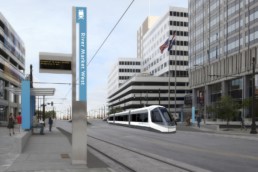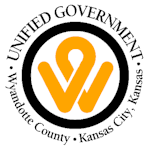Kansas City, Missouri, is using public-private partnerships to create a network of smart city infrastructure to reduce energy use, boost public transit, and improve quality of life.
Kansas City, Missouri, is partnering with Cisco, Sprint, and other private firms to create a city-wide network of digital solutions to lower energy use and improve quality of life. Currently in the pilot stage, the first phase of the Smart+Connected City project consists of Wi-Fi connectivity along the planned Kansas City Streetcar route. This network will help enable smart lighting, which reduces power consumption and enables better tracking of total energy used; digital kiosks, which provide citizens with information about local businesses and events; and sensor technology, which collects city data, allowing officials to make real-time decisions about infrastructure needs and service delivery.

The installation along the streetcar line is no coincidence. The project is part of a larger city effort to improve public transit. To accelerate these efforts, Kansas City launched a free bus pass program for municipal employees. The move boosted average daily city employee transit ridership by 60%, and the number of employees trying transit almost tripled over the first 12 months of the program. In the future, sensors may detect fluctuations in vehicle traffic volume. This data can then be communicated to, for example, parking garage managers, who may want to adjust the number of garage-entry lanes or attendants on duty to improve efficiency.
3.5km of Wi-Fi-connected streetcar line planned as part of the Smart+Connected City
The challenge
In an effort to improve its energy efficiency while at the same time attracting businesses, residents, and visitors to the city, Kansas City partnered with several private firms to create the Smart+Connected City project. New technologies, such as the availability of free Wi-Fi and easier downtown transportation, seek to attract talent – companies, employees, entrepreneurs, and students – to the area, while improving the city’s overall sustainability.
Co-benefits
Economic The LED lighting alone is expected to save a substantial amount of money for the city budget, and the city expects to see cost savings from water efficiencies and public services.
Environmental Smart lighting controls result in energy and cost savings, more effective and higher-quality lighting, and reductions in both carbon and light pollution.
Social Better public lighting and improved public transportation options not only lower emissions but also improve the urban experience by allowing residents safer, faster, and more enjoyable access to city resources.
About Kansas City
Kansas City is the third-largest city in the state of Kansas and the third-largest city of the Kansas City metropolitan area. Kansas City, Kansas is abbreviated as “KCK” to differentiate it from Kansas City, Missouri. It is part of a consolidated city-county government known as the “Unified Government”. As of the 2010 census, the city had a population of 145,786 residents.


